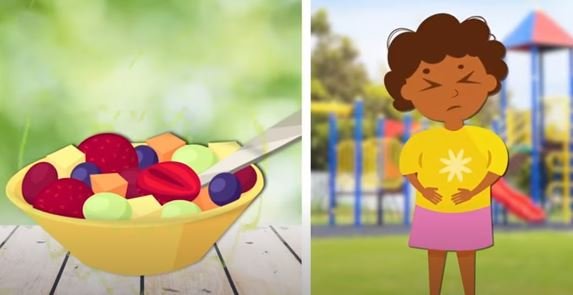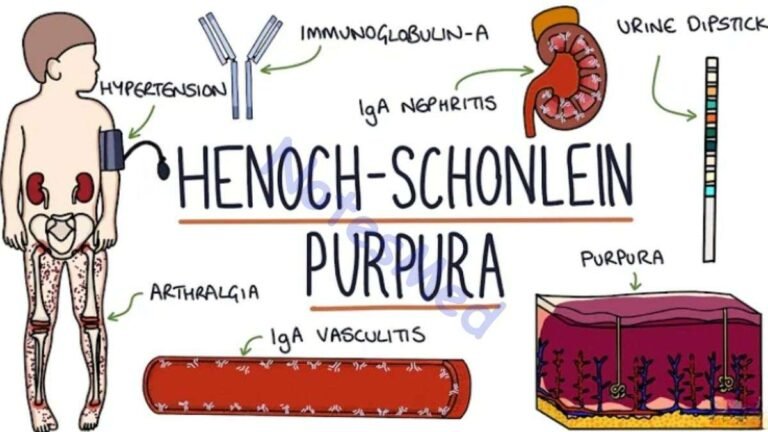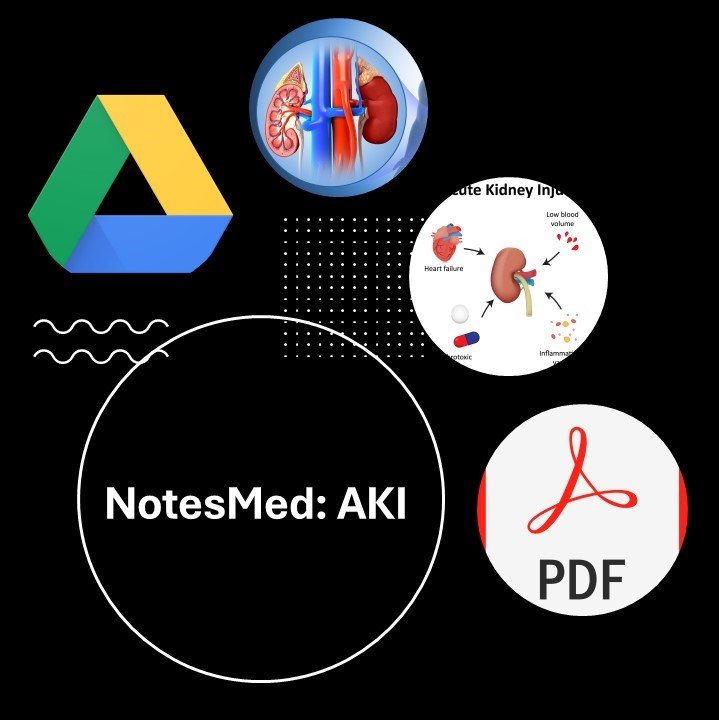What is food poisoning?
Food poisoning is acute gastroenteritis caused by ingestion of food or drink that is contaminated with either living bacteria that are in large numbers or their toxins or inorganic chemical substances and poisons derived from various plants and animals.
The condition is characterized by the following manifestation:
- History of ingestion of contaminated food products
- Attack of many persons at the same time
- The similarity of signs and symptoms seen in the majority of cases

Types of food poisoning
The types of poisoning depending on the germ you swallowed. It is mainly categorized into two types:
Non-bacterial food poisoning
In this case, signs and symptoms are caused by chemicals substances like arsenic, certain plants, and kinds of seafood.
Nowadays contamination of food in the majority of cases is by chemicals. Example: fertilizers, pesticides, cadmium, mercury, etc.
Bacterial food poisoning
In this case manifestation of signs and symptoms is caused by the ingestion of foods that are contaminated by living bacteria or their toxins.
It can be further classified into different types on the basis of the nature of bacteria-contaminated, includes:
Infective type
In this type, the multiplication of bacteria occurs in vivo when infective doses of microorganisms are ingested along with food.
The incubation period of an infective type bacterial food poisoning generally ranges from 8 to 24 hours. The typical example of this type of food poisoning is Salmonellae.
Toxic type
In this type, the disease occurs due to ingestion of food contaminated with the preformed toxin. The incubation period is short i.e. 2 to 6 hours. An example is staphylococcal food poisoning.
Infective-toxic type
In this type, bacteria release the toxin after it reaches the bowel. The incubation period is 6 to 12 hours. The typical example is C. perfringens food poisoning.
On the basis of etiological agents, bacterial food poisoning can be classified as:
Salmonella food poisoning
This is a common form of food poisoning. Recently its incidence has been increasing due to some reasons like an increase in community feeding, increased international trade in human food, a higher incidence of salmonellosis in farm animals, use of household detergents interfering with sewage treatment, and wide distribution of “prepared foods“.
Salmonellosis occurs in Man from farm animals and poultry (contaminated meat, milk, and milk products, sausages, custards, egg and egg products) also food contaminated with urine and feces of rats & mice.
Mechanism of food poisoning
The causative agent on ingestion multiplies in the intestine and gives rise to acute enteritis and colitis. Signs & symptoms are chills, fever, nausea, vomiting, and profuse watery diarrhea for 2-3 days.
Staphylococcal food poisoning
This poisoning is also as common as salmonella food poisoning. Enterotoxins of certain strains of coagulase-positive Staphylococcus aureus is the main factor. Heat stable toxins can be formed at a temperature of 35 deg. to 37 deg
Staphylococci are found on the skin, nose, and throat of men and animals. Cows suffering from mastitis are responsible for outbreaks of food poisoning due to milk and milk products. The short incubation period is due to the “preformed” toxin.
Mechanism of food poisoning
The poisoning is due to the ingestion of toxins performed in the food. Since the toxin is heat-resistant, it can remain in food after the death of organisms.
In general, the toxins act directly on the intestine and Central nervous system (CNS). Signs & symptoms are sudden onsets of vomiting, abdominal cramps, and diarrhea ( blood and mucus severe cases). Rarely causes fever & Death is uncommon.
Botulism
Most serious and caused by exotoxin of Clostridium botulinum (Type A, B, or E). The foods responsible for botulism are preserved foods like home-canned vegetables, smoked or pickled fish, homemade cheese, and similar low acid foods.
The incubation period is 18 to 36 hours. The toxin is formed under anaerobic conditions & acts on the parasympathetic nervous system. In botulism gastrointestinal symptoms are very slight.
The symptoms include dysphagia, diplopia, ptosis, dysarthria, blurring of vision, muscle weakness, and even quadriplegia. Fever generally absent, and consciousness retained.
Death may occur 4-8 days later due to respiratory or cardiac failure. Patients who survive do not develop antitoxin in the blood. The toxin is thermolabile so the heating of food to 100 deg. C for a few minutes will make it quite safe.
Infant botulism is due to infection of the digestive tract by Cl. botulinum with subsequent production of toxin in infants.
Cl. perfringens food poisoning
Due to Clostridium perfringens (welchii). The majority of outbreaks are associated with the ingestion of meat, meat dishes, and poultry. The spores are able to survive cooking, and if the cooked meat is not cooled enough, they will germinate.
The organisms multiply and produce a variety of toxins like alpha-toxin, theta toxin, etc. The common symptoms are diarrhea, abdominal cramps, and little or no fever, occurring 8 to 24 hours after consumption of the food.
Nausea and vomiting are rare. This poisoning recovery is rapid and fast and no deaths have been reported worldwide.
V. cereus food poisoning
Bacillus cereus is an aerobic, spore-bearing, motile, gram-positive rod. The spores can survive cooking and germinate and multiply at favorable temperatures.
Cereus produces at least 2 distinct enterotoxins. One, the emetic form with a short incubation period (1-6 hours) characterized by predominantly upper GI symptoms.
Another is diarrhoeal form, with a longer incubation period (12-24 hours) characterized by predominantly lower intestinal tract symptoms The toxins are pre-formed and stable. Diagnosis confirmed by isolation of 105 or more organisms per gram of contaminated food.
Symptoms
The symptoms of food poisoning depend on the germ you swallowed. The most common symptoms are;
- Upset stomach
- Stomach cramps
- Abdominal pain

- Nausea
- Vomiting
- Diarrhea
- Fever
- Chills
- Bloody diarrhea
- Weakness and fatigue
When to consult a Doctor for Food Poisoning
Consult your doctor if you have symptoms that are severe, such as:
- Bloody diarrhea
- High-grade of fever (temperature over 102°F, measured in mouth)
- Frequent vomiting (can lead to dehydration)
- Signs of dehydration, such as small volume or no urination, a very dry mouth, and throat, or feeling dizzy when standing up.
- Diarrhea for at least three days or more.
Diagnosis
First, Your doctor or consultant will ask about your food history before food poisoning and what types of food you have taken during the previous 2 days, place of consumption, time of onset of symptoms, symptoms of illness (e.g., nausea, vomiting, diarrhea, headache, abdominal pain. fever, etc).
The doctor or consultant will give you a physical examination to look for signs of dehydration or severe belly pain. Laboratory investigations were also done to determine causative agents, the total number of causative agents, etc. Other tests are:
- Animal experiments
- Blood for antibodies
- Environmental study
Treatment of food poisoning
- Take a rest: which is the best medication for poisoning.
- Take a sufficient amount of fluids to main lost fluids and electrolytes.
- If diarrhea is severe, drink oral rehydration solutions (ORS) such as Ceralyte*, Pedialyte* or Oralyte* to replace the fluid losses and prevent dehydration.
- Using some specific medications such as bismuth subsalicylate (e.g., Pepto-Bismol*) can reduce the duration and severity of simple diarrhea.
- Some antidiarrheal medications may be used to relieve symptoms (diarrhea and cramps) of the patients, but these medications should be avoided if the patients have a high fever or blood in the stools due to the fact that they may make the illness worse.

Prevention of food poisoning
Food hygiene
The food animals must be free from infection. A high standard of personal hygiene needed in-person involved in the handling, preparation, and cooking of food.
The medical inspection of food handlers is required. The time between preparation and consumption of food should be kept as short as possible.
Sanitary improvements
Sanitization of work surfaces, utensils, and types of equipment must be ensured. Food premises should be kept free from mice, rats, flies, dust, etc.
Health education
Normal food handlers should be educated in matters of clean habits and personal hygiene, such as frequent and thorough hand washing, the effect of consumption of contaminated food, etc.
Refrigeration
Food is refrigerated at a proper temperature between 10 to 49 degrees celsius.
Surveillance
Food samples must be collected periodically and subjected to laboratory analysis if they are unsatisfactory. Surveillance is continuing to be necessary to avoid outbreaks of food-borne diseases.
People frequently asked questions
- How long does food poisoning last?
- What does food poisoning feel like when it starts?
- How do I know if it’s food poisoning or a stomach virus?
- How do you deal with food poisoning?
- How do you confirm food poisonings?
- What are the 4 types of food poisonings?
- Do you always vomit with food poisonings?
- How do you self-treat food poisoning?
- Should I go to the hospital for food poisoning?




